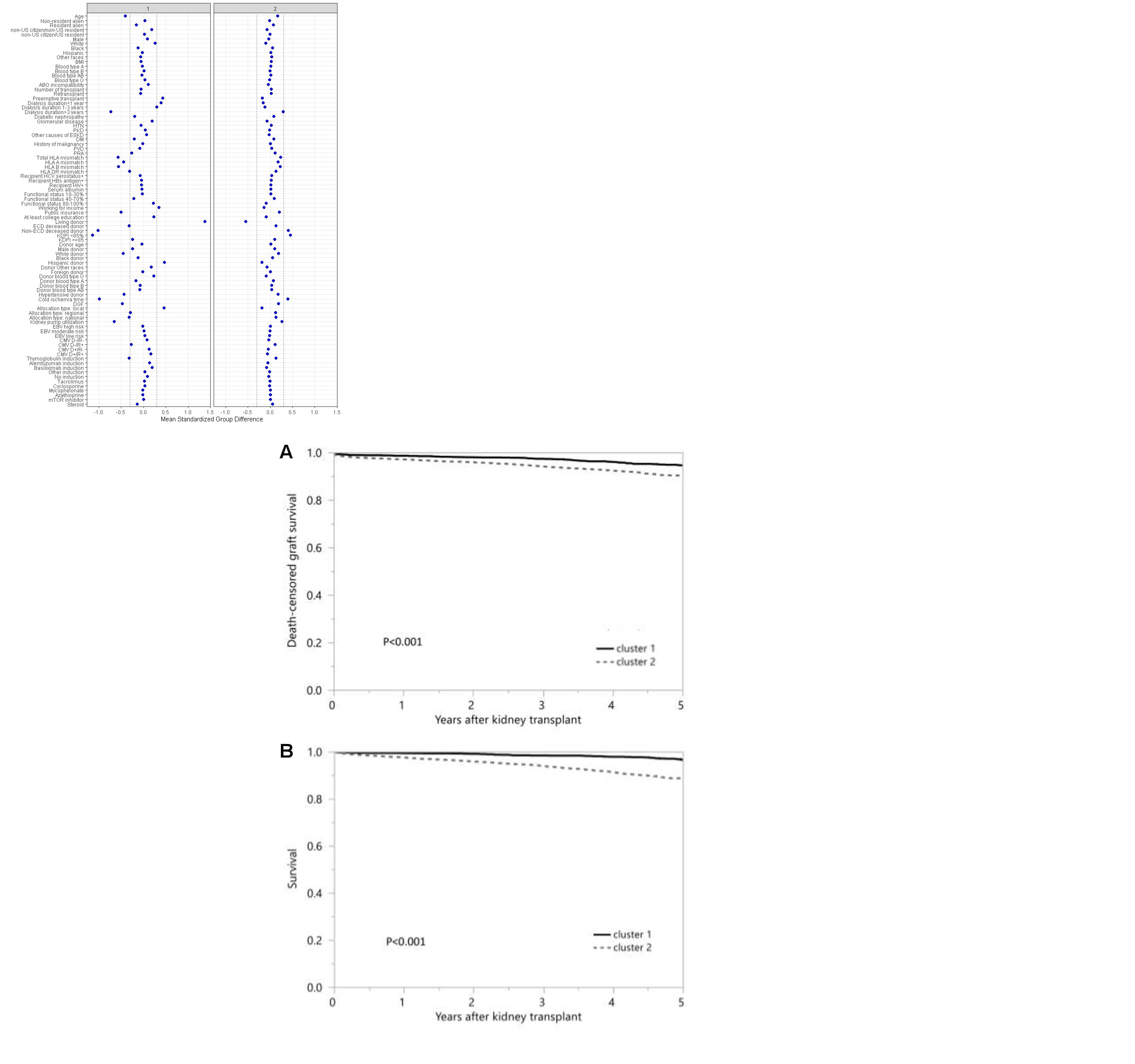Phenotypes of Non-Citizen Kidney Transplant Recipients in the United States by Machine Learning Consensus Clustering
1University of Mississippi Medical Center, Jackson, MS, 2Mayo Clinic, Rochestor, MN, 3Mayo Clinic, Phoenix, AZ, 4Saint Luke, Kansas City, MO, 5Texas Tech, El Paso, TX, 6Georgetown Transplant Institute, Washington, DC
Meeting: 2022 American Transplant Congress
Abstract number: 1734
Keywords: Ethics, Hispanic, Kidney transplantation, Outcome
Topic: Clinical Science » Kidney » 50 - Health Equity and Access
Session Information
Session Time: 7:00pm-8:00pm
 Presentation Time: 7:00pm-8:00pm
Presentation Time: 7:00pm-8:00pm
Location: Hynes Halls C & D
*Purpose: Health care policies and coverage for non-US citizens vary significantly across the country. Kidney transplant outcomes in non-US citizens are at par or better compared to US citizens. However, the proportion of non-US citizens receiving a deceased donor organ is lower compared to the proportion of non-US citizen organ donors. Our study aimed to cluster non-US citizen kidney transplant recipients using unsupervised machine learning approach.
*Methods: Consensus cluster analysis was performed based on recipient, donor, and transplant-related characteristics in 11,300 non-US citizen kidney transplant recipients in United States from 2010 to 2019 in the OPTN/UNOS database. Each cluster’s key characteristics were identified using the standardized mean difference, and subsequently compared the post-transplant outcomes among the clusters
*Results: Consensus cluster analysis identified two distinct clusters that best represented clinical characteristics of non-US citizen kidney transplant recipients. Cluster 1 had 3,226 (29%) patients, while cluster 2 (71%) had 8074 patients. Cluster 1 patients were featured by young age, preemptive kidney transplant or dialysis duration less than 1 year, working income, private insurance, non-hypertensive Hispanic living donor with low number of HLA mismatch. In contrast, cluster 2 patients were characterized by non-ECD deceased donor with KDPI <85%. As such, cluster 1 patients had less cold ischemia time, lower proportion of machine-perfused kidneys, and lower incidence of delayed graft function after kidney transplant. Compared to cluster 1, cluster 2 had higher 5-year death-censored graft failure (5.2% vs. 9.8%; p<0.001), patient death (3.4% vs. 11.4%; p<0.001), but similar 1-year acute rejection (4.7% vs. 4.9%; p=0.63). While the highest proportion of cluster 1 patients was highest in Regions 7 and 10, the highest proportion of cluster 2 patients was found in Regions 11, 6, and 5.
*Conclusions: Unsupervised machine learning approach identified two clinically distinct clusters of non-US citizen kidney transplant recipients with differing post-transplant outcomes. There are different cluster distributions among 11 geographic OPTN Regions that may help identify future strategies to improve outcomes of non-U.S. citizen kidney transplant recipients.
To cite this abstract in AMA style:
Vaitla P, Thongprayoon C, Jadlowiec C, Leeaphorn N, Mao S, Mao M, Prakrati A, Cooper M, Cheungpasitporn W. Phenotypes of Non-Citizen Kidney Transplant Recipients in the United States by Machine Learning Consensus Clustering [abstract]. Am J Transplant. 2022; 22 (suppl 3). https://atcmeetingabstracts.com/abstract/phenotypes-of-non-citizen-kidney-transplant-recipients-in-the-united-states-by-machine-learning-consensus-clustering/. Accessed December 21, 2025.« Back to 2022 American Transplant Congress

